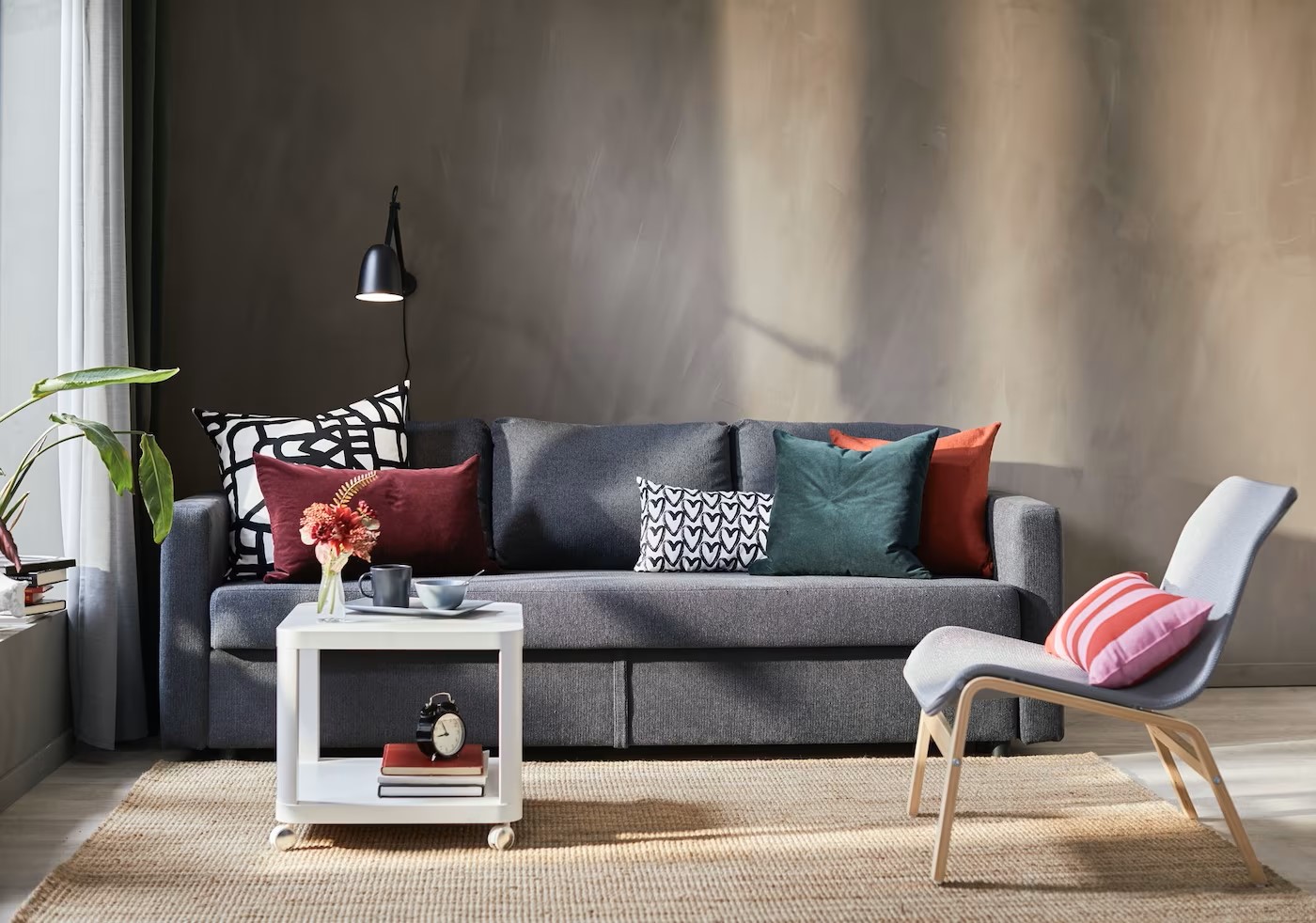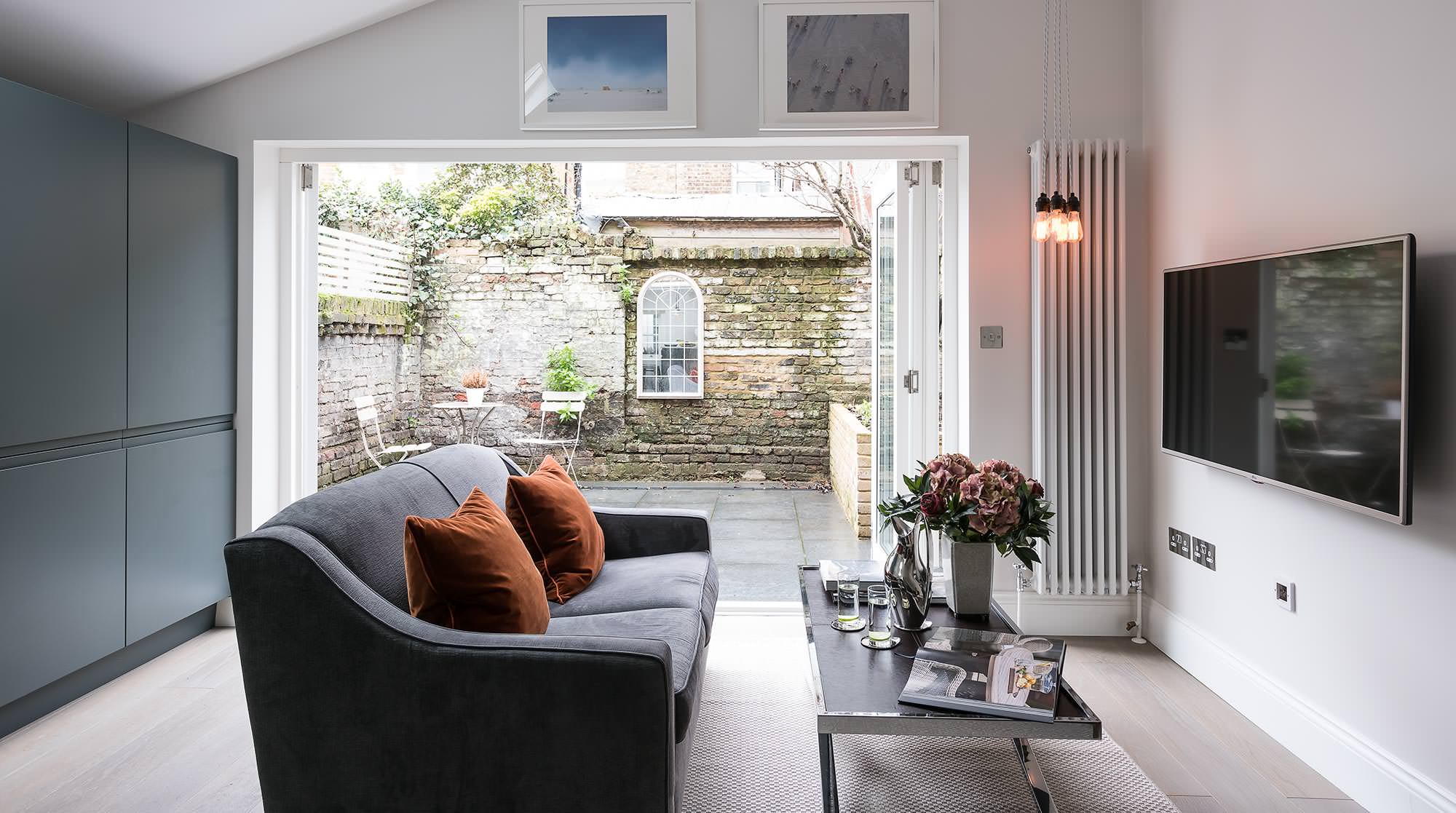Home>Furniture & Design>Living Room Furniture>How To Organize Furniture In The Living Room


Living Room Furniture
How To Organize Furniture In The Living Room
Modified: August 31, 2024
Learn how to optimize your living room layout with our expert tips on organizing furniture and design. Create a stylish and functional space with our living room furniture ideas.
(Many of the links in this article redirect to a specific reviewed product. Your purchase of these products through affiliate links helps to generate commission for Storables.com, at no extra cost. Learn more)
Consider the Room Layout
When organizing furniture in the living room, the first step is to consider the room layout. Take into account the size and shape of the room, as well as any architectural features such as windows, doors, and built-in elements. This will help you determine the best placement for your furniture to make the most of the available space and create a functional and visually appealing layout.
-
Measure the Room: Start by measuring the dimensions of the living room, including the length and width of the walls. This will give you a clear idea of the available space and help you choose appropriately sized furniture.
-
Identify Traffic Patterns: Consider how people will move through the room and ensure that there are clear pathways. Avoid placing furniture in a way that obstructs the natural flow of traffic.
-
Account for Functionality: Think about how you intend to use the living room. Will it be primarily for entertaining guests, watching TV, or relaxing with family? The room layout should reflect the intended function and cater to the activities that will take place in the space.
-
Consider Existing Features: Take note of any architectural elements, such as fireplaces, alcoves, or recessed areas, and incorporate them into your layout. These features can serve as natural focal points or provide opportunities for creative furniture arrangements.
By carefully considering the room layout, you can set the stage for a well-organized and inviting living room that meets your needs and enhances the overall aesthetic of your home.
Key Takeaways:
- Arrange furniture around the focal point, like a fireplace or TV, to create a cozy and visually appealing living room. Enhance the focal point with lighting and decorative elements for added charm.
- Create conversation areas by grouping seating for easy interaction. Include side tables for convenience and consider multiple zones for different activities. This fosters a warm and inviting atmosphere for meaningful interactions.
Read more: How To Choose Living Room Furniture
Determine the Focal Point
The focal point of a living room is the central element that draws the eye and anchors the space. It could be a fireplace, a large window with a beautiful view, a piece of artwork, or even a statement piece of furniture. Identifying the focal point is crucial when organizing furniture, as it helps to orient the layout and create a cohesive design.
-
Identify the Focal Point: Start by determining the most prominent feature in the room. This could be a natural focal point, such as a fireplace or a large window, or an intentional one, like a piece of art or an entertainment center. Once you've identified the focal point, arrange your furniture to complement and highlight it.
-
Arrange Around the Focal Point: Position the main seating area to face the focal point. This could mean placing the sofa and chairs in a way that allows for easy viewing of the fireplace or TV. By doing so, you create a comfortable and visually appealing arrangement that encourages relaxation and social interaction.
-
Enhance the Focal Point: Once the furniture is arranged around the focal point, consider ways to enhance its impact. For example, you can use lighting to draw attention to a piece of artwork or add decorative elements like mirrors or plants to accentuate a fireplace or window. This not only elevates the focal point but also adds depth and character to the living room.
By determining and emphasizing the focal point, you can effectively organize the furniture in a way that maximizes the visual appeal and functionality of the living room. This approach creates a harmonious layout that makes the most of the room's unique features and enhances the overall ambiance.
Create Conversation Areas
Creating conversation areas in the living room is essential for fostering interaction and socialization among occupants. This approach involves arranging furniture in a way that facilitates comfortable communication and engagement. Here's how to effectively create conversation areas:
-
Group Seating: Arrange seating, such as sofas and chairs, to face each other, promoting easy conversation. Placing furniture in a circular or semi-circular formation can also encourage a sense of inclusivity and intimacy within the group.
-
Consider Proximity: Position seating at an appropriate distance to allow for easy conversation without straining voices. Avoid placing furniture too far apart, as it may hinder natural communication, or too close, which can feel intrusive.
-
Include Side Tables: Incorporate side tables within each conversation area to provide a convenient surface for placing drinks, snacks, or personal items. This not only adds functionality but also ensures that occupants have easy access to essentials during conversations.
-
Create Multiple Zones: If the living room is spacious, consider creating multiple conversation areas to accommodate different activities or groups of people. For instance, you can have a cozy seating arrangement near the fireplace for intimate conversations and a larger seating area for entertaining guests.
By strategically creating conversation areas, you can establish a warm and inviting atmosphere in the living room, encouraging meaningful interactions and enhancing the overall social dynamics of the space.
When organizing furniture in the living room, start by creating a focal point, such as a fireplace or TV. Arrange seating to encourage conversation and leave enough space for easy movement. Avoid blocking natural pathways.
Maximize Traffic Flow
When organizing furniture in the living room, it's crucial to maximize traffic flow to ensure easy movement and accessibility within the space. Here are some key strategies to optimize traffic flow:
-
Clear Pathways: Ensure that there are clear pathways throughout the room, allowing people to move from one area to another without obstacles. Avoid placing furniture in a way that obstructs the natural flow of traffic, especially near doorways and major walkways.
-
Consider Circulation Space: Leave adequate space between furniture pieces to allow for comfortable movement. This is particularly important in high-traffic areas where people are likely to pass through frequently. By providing ample circulation space, you can prevent congestion and promote a sense of openness in the living room.
-
Mindful Placement: Position furniture in a way that directs traffic around the room rather than through the middle of seating areas. This can be achieved by creating designated walkways and ensuring that there are no major obstructions along these paths.
-
Flexible Arrangements: Opt for furniture arrangements that can be easily reconfigured to accommodate different traffic patterns. This is especially beneficial when hosting gatherings or events, as it allows you to adapt the layout to suit the specific needs of the occasion.
By prioritizing the maximization of traffic flow, you can create a living room layout that is not only aesthetically pleasing but also highly functional, providing a seamless and comfortable experience for both everyday use and entertaining purposes.
Balance the Furniture
Achieving a sense of balance in the arrangement of furniture is essential for creating a harmonious and visually appealing living room layout. Here's how to effectively balance the furniture to enhance the overall aesthetic and functionality of the space:
-
Symmetrical Arrangements: Consider symmetrical placement of furniture to create a sense of equilibrium. For instance, if you have a large sofa on one side of the room, balance it with a pair of armchairs or a similar substantial piece on the opposite side. This creates a pleasing visual symmetry that contributes to a well-balanced look.
-
Distribute Visual Weight: Take into account the visual weight of furniture pieces and distribute them evenly throughout the room. Heavier items, such as large bookcases or entertainment units, should be balanced with lighter elements, such as open shelving or accent chairs, to prevent the space from feeling lopsided.
-
Scale and Proportion: Pay attention to the scale and proportion of furniture in relation to the size of the room. Avoid overcrowding one area with oversized pieces while leaving other areas sparse. Aim for a proportional distribution of furniture to maintain a sense of balance and proportionality.
-
Mix and Match: Incorporate a mix of furniture styles, shapes, and heights to add visual interest and balance to the room. For example, pair a sleek, modern coffee table with a more traditional-style sofa, or mix different types of seating, such as a loveseat with individual chairs, to create a dynamic and balanced composition.
-
Utilize Rugs and Accessories: Use area rugs and accessories to anchor and balance furniture groupings. A well-placed rug can define a seating area and tie the furniture together, while carefully chosen accessories, such as lamps, artwork, or decorative objects, can add balance and cohesion to the overall design.
By carefully balancing the furniture in the living room, you can create a cohesive and inviting space that feels well-proportioned and visually appealing, enhancing the overall comfort and functionality of the room.
Read more: What Furniture Is Usually In A Living Room?
Utilize Multi-Functional Pieces
Incorporating multi-functional pieces of furniture into your living room layout can significantly enhance the versatility and efficiency of the space. These pieces serve dual purposes, offering practicality without compromising on style. Here's how to effectively utilize multi-functional pieces:
-
Convertible Sofa Beds: Integrate a sofa bed into your living room to provide a comfortable seating option during the day and a convenient sleeping space for guests at night. This versatile piece is ideal for maximizing the functionality of the room, especially in homes with limited space.
-
Storage Ottomans: Utilize ottomans with built-in storage to declutter the living room while providing additional seating or serving as a makeshift coffee table. These multi-functional ottomans offer a practical solution for stowing away blankets, pillows, or other items, keeping the space tidy and organized.
-
Nesting Tables: Opt for nesting tables that can be easily stacked together or separated to accommodate various needs. These versatile tables offer flexibility in terms of surface area, allowing you to expand or condense the available table space based on different activities or the number of occupants in the room.
-
Modular Shelving Units: Incorporate modular shelving units that can be customized and rearranged to adapt to changing storage requirements. These units provide a flexible and adaptable storage solution, allowing you to display decorative items, store books, or showcase personal collections while maintaining a streamlined and organized living room.
-
Folding Desks or Tables: Integrate folding desks or tables that can be expanded for work or dining purposes and then folded away when not in use. This space-saving solution is particularly beneficial for creating a functional workspace or accommodating additional dining seating as needed, without occupying permanent floor space.
By strategically incorporating multi-functional pieces into the living room, you can optimize the use of the space, increase its practicality, and create a more adaptable and efficient environment for various activities and needs.
Frequently Asked Questions about How To Organize Furniture In The Living Room
Was this page helpful?
At Storables.com, we guarantee accurate and reliable information. Our content, validated by Expert Board Contributors, is crafted following stringent Editorial Policies. We're committed to providing you with well-researched, expert-backed insights for all your informational needs.















0 thoughts on “How To Organize Furniture In The Living Room”